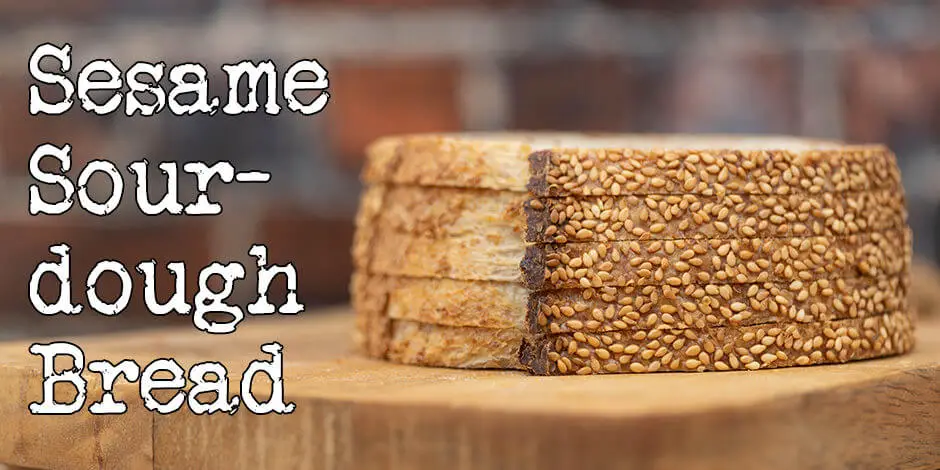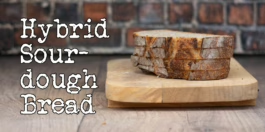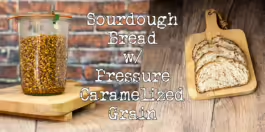Making bread with toasted sesame seeds is a no-brainer. If you’ve never experienced toasted sesame seeds, you are missing out. I keep a bowl of toasted sesame seeds in my kitchen. Like other people will add salt and pepper, I will add salt, pepper, and toasted sesame seeds. This is my recipe for toasted sesame seed sourdough bread.
If you are just here for the recipe, you can press the button underneath to be automagically transported to the recipe:
Jump to Recipe Jump to VideoSesame seeds are a sign of good luck
Today, many countries worldwide produce sesame seeds; they were first cultivated in India. Japan is the biggest importer of sesame seeds as it is a massive part of their cuisine.
Researchers observed the diastolic and systolic blood pressure to be lower in people with moderate sesame seed consumption.
The world’s cuisines use sesame seeds in a myriad of different ways. Here are just a few:
- toppings for baked goods like burger buns or bagels
- as a coating for sushi
- toasted sesame oil is enormous in Vietnamese and South Korean cuisine.
- Indian cuisine uses both sesame oils and seeds extensively.
- Middle Eastern cuisine uses the sesame paste tahini for many things, famously for Hummus.
- in both Asian and Middle Eastern cuisines, they make a variety of candies and desserts using sesame.
The Caribbean and the deep American South consider sesame seeds a sign of good luck.
It’s a versatile ingredient.
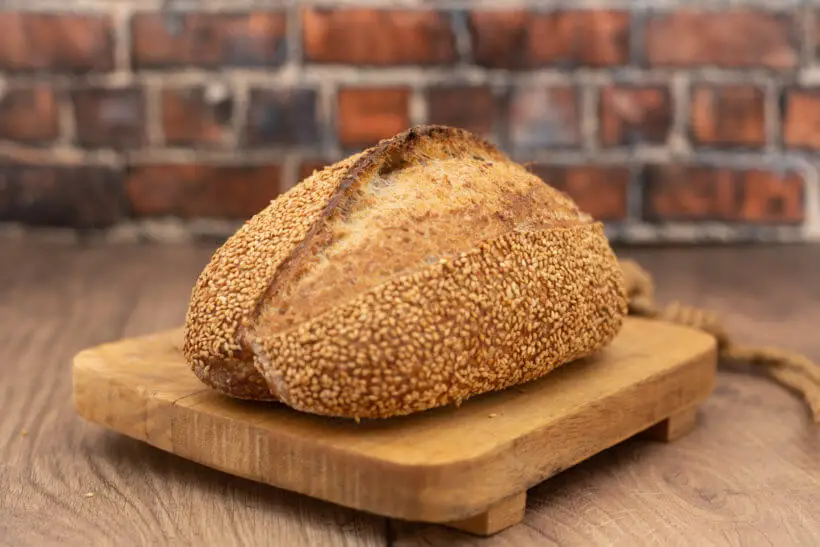
The dough in this sesame sourdough bread recipe
Vitals
| Total weight | 1385 grams |
| Pre-fermented flour | 9.1% |
| Hydration | 80.0% |
| Yield | Two small loaves |
The dough
The flour choice for this bread is 80% bread flour and 20% whole-grain spelt flour.
The spelt flour perfectly suits the nutty character of the toasted sesame seeds, but if you can’t get spelt, I’d recommend using whole-grain wheat flour. Most of the other whole grains have flavors (delicious, no doubt) that might mask the sesame taste.
| Weight | Ingredient | Baker's Percentage |
|---|---|---|
| 521g | bread flour | 80% |
| 130g | spelt flour | 20% |
| 508g | water | 78% |
| 13g | salt | 2% |
| 130g | starter (100% hydration) | 20% |
| 98g | toasted sesame seeds | 15.1% |
The hydration is 80%, which may be high depending on your bread flour. If you are not sure how absorbent your bread flour is, I recommend that you start at 70% and go up based on the feeling of the dough—details in the recipe.
The inoculation is the standard 20%, which is excellent for fermentation in the 20°C-30°C range (68°F-86°F); if it’s colder or warmer where you like, you may want to change the inoculation.
The salt content is 2% which is a good amount to bring out the flour taste.
If you’d like to tinker with the formula, and change hydration, quantity, and inoculation, you can do so here in my Bread Calculator.
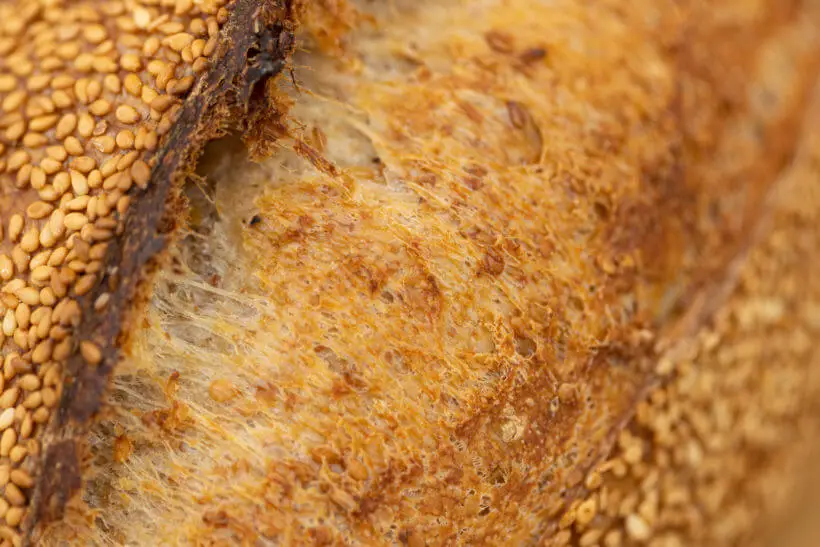
The conclusion of this sesame sourdough bread recipe
When this bread is baking, the intoxicating smell of toasted sesame seeds spreads all around the house.
It’s almost overwhelming when it’s done baking, and you take it out. You want to take this bread, tear it apart, and eat it like a total savage.
When it’s cooled down, you cut a slice. You have the backbone, right? Smear your favorite butter on top and have the first bite.
Chills down your spine. Oh my…
This bread may be one of the best loaves of bread I’ve ever made.
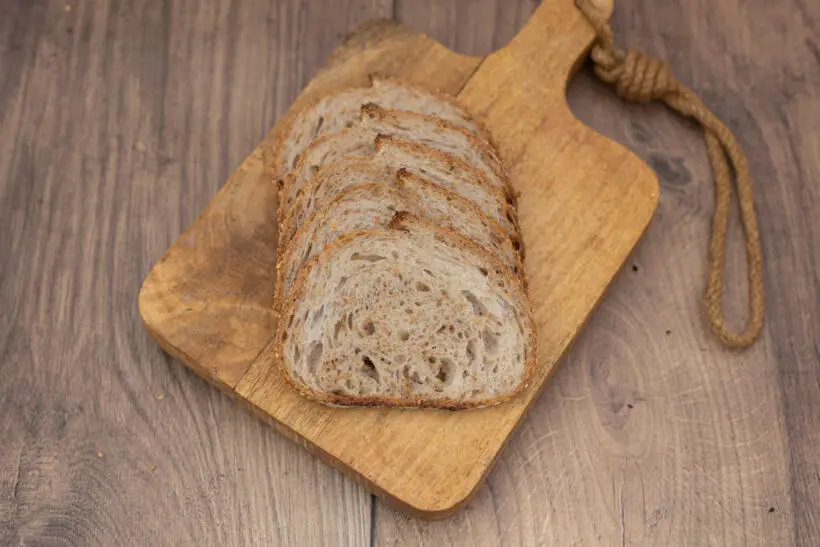
Please share this recipe for sesame sourdough bread on social media
This is my recipe for sesame sourdough bread. If you like the recipe, please consider sharing it with like-minded bread lovers on social media.
If you make it and post it on Instagram, please tag me as @foodgeek.dk so I can see it. That would make me very happy.
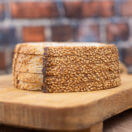
Sesame Sourdough Bread
Equipment
Ingredients
- 521 g bread flour
- 130 g spelt flour
- 508 g water
- 13 g salt
- 130 g sourdough starter
- 98 g sesame seeds
Instructions
Mix dough
- To a medium bowl add: 521 grams of bread flour, 130 grams of spelt flour and 13 grams of salt.
- Mix it with your hands so everything is well distributed.
- Then add: 130 grams of sourdough starter, fed and grown to its peak.
- If you know your bread flour can take 80% hydration, go ahead and add 508 grams of water.
- If you’re unsure, start with 436 grams of water for 70% and add 36 grams to go to 75%. Add another 36 grams of water if the dough still seems dry to go to 80%.
- Mix with your hands until no dry flour is left.
- Then let the dough rest for an hour to develop the gluten.
Prepare sesame seeds
- While the dough is resting, heat your oven to 200°C/390°F.
- Then prepare a baking sheet with parchment paper and pour 98 grams of white sesame seeds on the sheet and spread them out.
- Toast in the warm oven for about 10 minutes or until golden brown.
- Add the toasted seeds to a bowl and put aside until you need them.
Bulk fermentation
- Do a set of stretch and folds, and let the dough rest for 30 minutes.
- Do another set of stretch and folds. Before each set, add about a quarter of the toasted sesame seeds. After you finish the set, help the dispersion of the seeds by doing the Rubaud method.
- Then let the dough rest for 30 minutes.
- Do the last set of stretch and folds. Then check the gluten development by doing a windowpane test.
- Then add the dough to a see-through bulking container with straight sides. Then wet your hand and level the top of the dough.
- Then mark the top of the dough on the container and where it will have grown 25% and put it somewhere warm. If you have a proofer, that would be a great place.
- Then let the dough proof until it's grown 25%.
Divide and pre-shape
- When the dough has grown 25% and is puffy, divide the dough into two equally sized pieces.
- Then, using your bench scraper, shape each piece into a ball. Then let them rest on the kitchen counter for 20 minutes.
- While they are resting, prepare a dish towel with many sesame seeds on top.
Final shaping
- Then shape your bread into either a boule or a bâtard. See the video for details.
- Then spray the top of the dough lightly with water and invert the dough onto the seeds.
- Then lift the sides of the dishtowel to get it all up the sides of the dough. Then move the dough to a banneton.
- Shape the other piece of dough the same way.
- Then move the bannetons to the fridge.
- They should retard for at least 8 hours, but up to 48 hours.
Bake
- When you’re ready to bake, heat your oven to 260°C/500°F with a baking steel and a dutch oven inside. I am using my Challenger bread pan.
- When the oven has heated, grab one of the doughs from the fridge. Don’t let it come up to temperature.
- Dust the bottom of the dough with rice flour to help it slide off the peel. Then flip the dough onto the peel.
- Score the dough and then move it to the dutch oven inside the oven.
- Bake for 20 minutes.
- After 20 minutes, turn the oven down to 230°C/450°F. Do not remove the lid; this is to prevent the seeds from scorching. Bake for another 25 minutes.
- Then take the bread from the oven and put it on a wire rack to cool off.
- Bake the other bread the same way.



